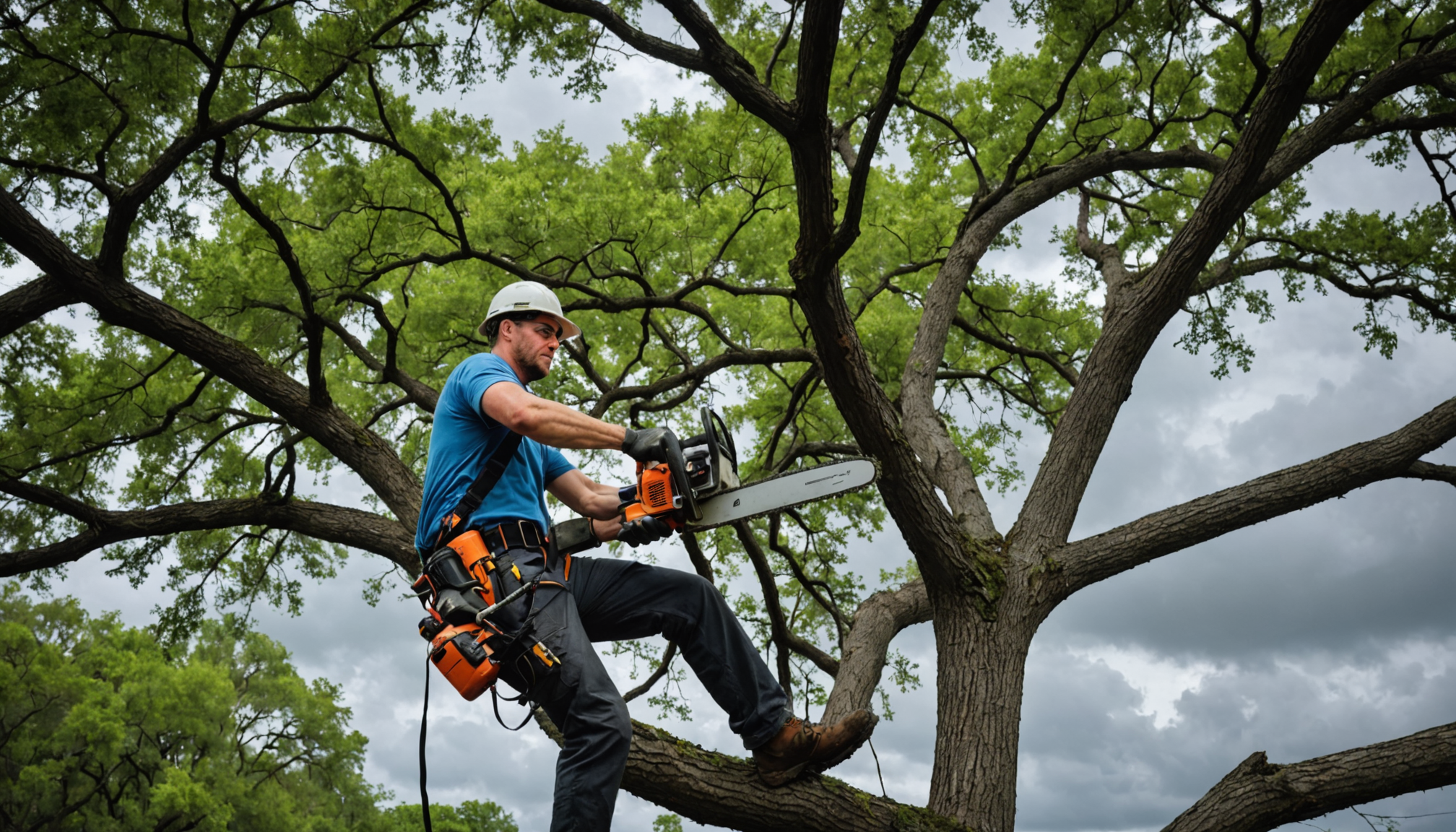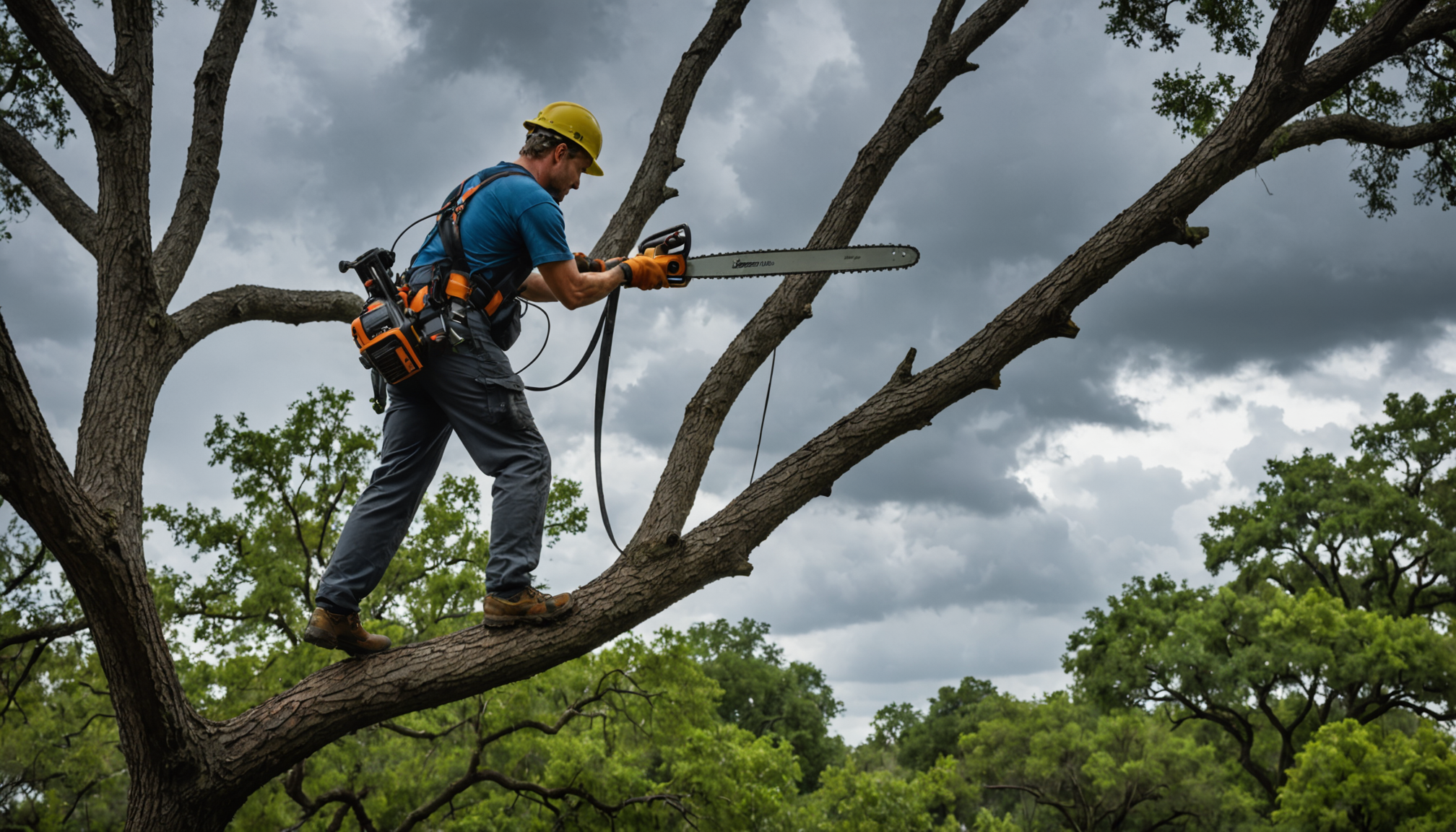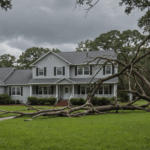According to the National Weather Service, proper tree maintenance can reduce storm damage by up to 50% during Tampa’s hurricane season. The key to effective storm preparation lies in understanding and implementing correct trimming techniques that promote both tree health and structural integrity.
When trimming trees for hurricane readiness, experts from the University of Florida’s Extension Service recommend focusing on creating a strong central trunk with well-spaced branches. This technique, known as structural pruning, helps trees withstand high winds by allowing air to flow through the canopy rather than creating a sail effect.
For optimal results, implement these proven trimming techniques:
- Crown thinning: Remove 10-15% of small branches from the outer crown to reduce wind resistance
- Lion’s tailing prevention: Avoid removing all interior branches, as this weakens the tree’s structure
- Directional pruning: Cut branches at a 45-degree angle to promote proper healing and prevent water collection
- Crown reduction: Decrease the overall size of the canopy while maintaining the tree’s natural shape
Tampa tree service professionals emphasize the importance of maintaining a balanced canopy. Studies from the International Society of Arboriculture show that uneven weight distribution can increase the risk of tree failure during storms by up to 30%. When trimming, ensure cuts are clean and made just outside the branch collar to promote proper healing.
Safety considerations must guide all trimming activities. The OSHA-recommended approach includes using the three-cut method for larger branches: an undercut, a top cut slightly further out, and a final cut near the trunk. This prevents bark tearing and protects both the tree and nearby structures.
The optimal timing for storm preparation trimming is 3-4 months before hurricane season begins, allowing trees to heal properly. Certified arborists recommend scheduling major pruning during the dormant season, typically between November and March in Tampa’s climate zone, to minimize stress on the trees and reduce the risk of disease transmission.
Identifying hazardous branches and limbs
Conducting a thorough inspection of your trees can reveal potential hazards that could become dangerous projectiles during Tampa’s intense hurricane seasons. Start by examining the trunk’s base for signs of decay, mushroom growth, or cavity formations, as these indicate structural weaknesses that require immediate attention.
Look for branches that cross or rub against each other, as these can create weak points during high winds. Dead, dying, or diseased branches are particularly concerning – they can be identified by their lack of bark, absence of leaves during growing season, or discolored foliage. Local tree service experts recommend paying special attention to branches larger than two inches in diameter that hang over roofs, power lines, or parking areas.
Safety assessments should include checking for V-shaped branch unions, which are inherently weaker than U-shaped connections. These formations are especially problematic in Tampa’s storm-prone environment, where wind forces can exploit such structural vulnerabilities. Additionally, examine trees for signs of previous damage that may have created unstable areas within the canopy.
Watch for branches that extend more than half the trunk’s diameter, as these are prone to failure during severe weather. Trees with a lean greater than 15 degrees from vertical require professional evaluation, particularly if the ground around the root zone shows cracking or heaving. Multiple trunks or co-dominant stems should be carefully assessed for stability and potential splitting points.
- Look for cracks extending deeply into or through branches, especially those larger than 3 inches in diameter
- Check for hollow areas or cavities that exceed 1/3 of the branch’s diameter
- Identify branches with peeling bark or showing signs of internal decay
- Monitor any branches that have grown too long and heavy for their diameter
Essential yard cleanup before storms
A common mistake many Tampa homeowners make is waiting until the last minute before a hurricane to clean their yards, creating a rushed and potentially dangerous situation. Objects that seem harmless during normal weather can become lethal projectiles during storms, with wind speeds capable of turning everyday items into dangerous missiles.
Begin by securing or storing loose items that could become airborne: garden tools, potted plants, lawn furniture, and decorative elements should be moved indoors or properly anchored. Many residents overlook smaller items like wind chimes, bird feeders, and garden stakes, which can cause significant damage during high winds.
Another critical error is improper disposal of yard waste. Leaving piles of branches, leaves, or lawn clippings can clog storm drains and create flooding hazards. Local Tampa tree service companies recommend completing yard cleanup at least 48 hours before a storm’s anticipated arrival, allowing adequate time for proper waste disposal through authorized channels.
Pay special attention to these often-overlooked areas:
– Clean and secure rain gutters to prevent water damage
– Remove accumulated debris from fence lines
– Clear loose gravel or decorative rocks from landscaping
– Stabilize young trees with proper hurricane strapping
– Empty and secure trash and recycling bins
For enhanced safety, document your yard’s condition with photographs before hurricane season begins. This helps with insurance claims and provides a reference point for future storm preparation. Remember to check and clean pool areas, ensuring that drainage systems are clear and pool covers are properly secured.
Many homeowners make the mistake of leaving outdoor equipment exposed. Store gas-powered tools in elevated, covered areas, and ensure that propane tanks are secured or moved to safe locations. Drainage areas should be cleared of debris and vegetation to prevent water backup during heavy rains.
A critical oversight is failing to maintain proper documentation of valuable trees and landscaping. Take photographs and keep records of professional maintenance, as this information can be vital for insurance purposes if storm damage occurs. Regular maintenance throughout the year, rather than last-minute preparations, is key to effective storm readiness.
Professional assessment and maintenance
Working with a certified arborist or professional tree service company in Tampa is crucial for maintaining a storm-resistant landscape. These experts bring specialized knowledge and equipment that helps identify potential hazards before they become catastrophic during hurricanes. According to the International Society of Arboriculture, professional assessments should be scheduled at least twice yearly in storm-prone areas.
A comprehensive professional assessment typically includes:
– Advanced diagnostic tools to detect internal decay
– Soil compaction testing around root zones
– Crown density and structural integrity evaluation
– Risk assessment for nearby structures and power lines
– Documentation of tree health and maintenance needs
Local Tampa arborists recommend establishing a regular maintenance schedule that aligns with the hurricane season. This includes quarterly inspections of high-risk trees and annual detailed assessments of the entire property. Professional tree services utilize specialized equipment like resistance drills and sonic tomography to detect hidden decay that might compromise tree stability during storms.
Statistics from the Tampa Bay Regional Planning Council show that properties with regular professional tree maintenance experience 40% less storm-related damage compared to those without systematic care. Certified arborists can provide detailed reports and recommendations that often satisfy insurance requirements and help with future claims.
When selecting a professional service, ensure they:
– Hold valid certification from the ISA
– Carry appropriate insurance coverage
– Use modern safety equipment and practices
– Provide detailed written assessments
– Offer emergency response services during storm seasons
Regular professional maintenance helps identify and address potential problems before they become safety hazards. Experts can spot early signs of disease, pest infestation, or structural weakness that might not be apparent to untrained eyes. They can also recommend specific treatments or modifications to strengthen trees against Tampa’s intense storm conditions.
Remember that investing in professional tree care is significantly less expensive than dealing with storm damage or liability issues. By maintaining a proactive relationship with a qualified tree service, you’re not just protecting your property – you’re investing in the long-term safety and beauty of your landscape.
Safety equipment and weather monitoring
- How often should I check my weather monitoring equipment during hurricane season in Tampa?
- During hurricane season (June through November), check your equipment at least weekly to ensure proper functioning. Weather monitoring systems should include a battery-powered NOAA weather radio, wind meter, and rain gauge, with batteries replaced at the start of each season.
- What essential safety gear do I need for pre-storm tree maintenance?
- Essential safety equipment includes a hard hat, safety goggles, cut-resistant gloves, steel-toed boots, and high-visibility clothing. When using power tools for tree trimming, hearing protection and a properly fitted safety harness are also required for elevated work.
- Can I do storm preparation tree work during lightning conditions?
- Never perform tree service work when lightning is present or forecasted. The Tampa Fire Department recommends stopping all outdoor maintenance activities when thunderstorms are within 10 miles of your location and waiting at least 30 minutes after the last thunder before resuming work.
- What’s the best weather monitoring app for tracking potential hurricanes in Tampa?
- The National Hurricane Center’s official app and the NOAA Weather Radar app are highly recommended for Tampa residents. These apps provide real-time updates, storm tracking, and emergency alerts specific to your location.
- How far in advance should I start preparing my trees before a hurricane?
- Begin major tree preparation work at least 3-4 months before hurricane season starts to allow proper healing time. For immediate storm threats, secure loose branches and remove obvious hazards at least 36-48 hours before the expected arrival of severe weather.











